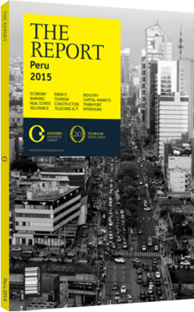A growing number of retail brands are entering the domestic market
Until a few years ago, Peru’s retail sector was one of the least mature in the region. Since then it has become Latin America’s fastest-growing, as shopping malls, supermarkets and stores from international brands have proliferated. Growth has been fastest in the advantage of this situation to establish a position for itself in the retail sector. In 2005, it opened its first shopping mall, branded Real Plaza, in Chiclayo, Peru’s fourth-largest city with a population of just over half a million according to the 2007 census. Subsequently it opened Real Plaza franchises in Trujillo, Peru’s third-biggest city, and Huancayo, the eighth most populous.
After establishing the brand in the provinces, Interbank opened its first Real Plaza location in Lima in 2008. Since then, it has expanded, while retaining its focus on the regions outside of Lima. Its most recently opened malls are on Salaverry Avenue in Lima, and in Cusco and Cajamarca, cities of 350,000 and 160,000 inhabitants, respectively, located in the mountains. The Chileans have since followed Interbank to the country’s smaller markets, but the Peruvian group’s early gamble on the provinces paid off. Real Plaza has become the biggest shopping mall brand by sales in the country and the fastest-growing one, with estimated year-on-year sales growth of 60% between 2013 and 2014.
Interest From Abroad
“Today the foreign investors in the retail sector are regional,” Óscar Chávez, a senior economist at CCL, told OBG. “They’re not the biggest international chains, but there are projects in place for those companies to arrive.” Indeed, Walmart and El Corte Inglés, the most powerful retailer in Spain, have announced plans to enter the market in 2015. Walmart already has a large presence throughout Latin America with stores in Mexico, Brazil, Argentina, Chile and several Central American markets. The arrival of El Corte Inglés, which is well known throughout Latin America because of its prominence in Spain, is part of the company’s expansion plan designed to increase exposure to markets outside Spain, where 86 of its 88 stores were located as of September 2014.
These brands follow other Western retailers who have successfully entered Peru during the past decade. Starbucks has a growing presence, especially in Lima, and the firm plans to have 100 stores in the country by 2015. Zara, meanwhile, opened its first store in Lima in 2012 and reportedly sold $1m of goods in its first week. H&M plans to open its first Peruvian store in 2015. All of these brands will have to take on the incumbents to win market share, while Walmart and El Corte Inglés will compete with the Chilean groups and Interbank. Zara and H&M enter a segment occupied by several Peruvian retailers, notably Topitop. The privately held Peruvian firm manufactures fashion-minded clothing, which it sells in its own stores under proprietary labels and exports to foreign markets where it is branded by companies such as Gap and Ralph Lauren.
The Topitop brand was one of the first to capitalise on the new buying power of the country’s growing middle class and can rely on a certain amount of brand loyalty. However, with sales of approximately $275m in 2010, Topitop is a minnow compared to Zara and H&M and could struggle to compete with their economies of scale. H&M, in particular, is likely to undercut Topitop’s prices, while Zara’s products are positioned to attract buyers at a slightly higher price point.
Peru Peaking
The influx of foreign investment comes at a time when Peru’s retail sector is “peaking,” according to the rubric used by consulting firm A.T. Kearney to analyse retail investment opportunities in emerging markets. The firm’s annual Global Retail Development Index, which is closely watched by retail industry executives, categorises the retail sectors of emerging markets as opening, peaking, maturing or closing.
A market is considered to be peaking when two conditions are met: consumers’ habits have changed to the point that they seek out organised retail formats and prefer global brands; and retail districts are being developed but real estate is still available at low prices. These conditions, which accurately describe the current situation in Peru, are favourable to the opening of stores directly operated by foreign brands.
Peru is considered to be in the early phase of peaking since formal retail penetration is still low, making it an attractive target for retail investment.
Risks
Despite a generally positive outlook, several factors count against Peru’s attractiveness as an investment target. For one, gross national income (GNI) per capita is still low, even after a decade of growth. According to the World Bank’s Atlas method of calculation, Peru’s GNI per capita still lags that of Latin America and the Caribbean by a wide margin. Peru’s GNI per capita was $6390 in 2013 compared to an average of $9536 in the region. Additionally, Peru’s relatively undiversified economy and high exposure to commodities prices threatens the stability of consumer spending. This risk seems to have played out recently as retail growth slowed between mid-2013 and mid-2014 following a collapse in global commodities prices and a consequent decline in mining production in Peru.
The obstacles to continued growth of Peruvian retail are real and cannot be ignored by investors, but they are still outweighed by the factors that have driven retail growth during the past decade. With a still-growing middle class that remains underserved by formal retailers, money can be expected to continue flowing into the sector, both from investors and consumers.
You have reached the limit of premium articles you can view for free.
Choose from the options below to purchase print or digital editions of our Reports. You can also purchase a website subscription giving you unlimited access to all of our Reports online for 12 months.
If you have already purchased this Report or have a website subscription, please login to continue.

